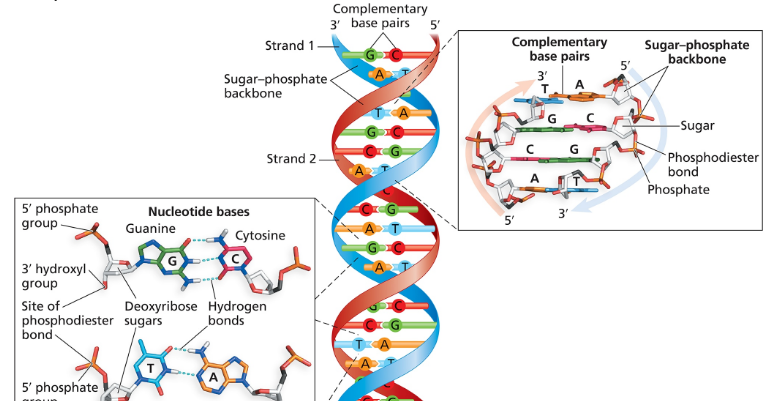Here are the essential concepts you must grasp in order to answer the question correctly.
Nucleotides
Nucleotides are the building blocks of DNA and RNA, consisting of three components: a sugar (deoxyribose in DNA), a phosphate group, and a nitrogenous base. The sequence of these bases encodes genetic information. In DNA, the four types of nitrogenous bases are adenine (A), thymine (T), cytosine (C), and guanine (G). Understanding the structure of nucleotides is essential for analyzing DNA sequences.
Recommended video:
Complementary Base Pairing
In DNA, complementary base pairing refers to the specific pairing of nitrogenous bases across the two strands of the double helix. Adenine pairs with thymine (A-T) through two hydrogen bonds, while cytosine pairs with guanine (C-G) through three hydrogen bonds. This pairing is crucial for the stability of the DNA structure and for accurate DNA replication and transcription.
Recommended video:
Hydrogen Bonds in DNA
Hydrogen bonds are weak interactions that occur between the nitrogenous bases of the two DNA strands, contributing to the overall stability of the DNA double helix. Each A-T pair forms two hydrogen bonds, while each C-G pair forms three. The total number of hydrogen bonds in a DNA duplex can be calculated by analyzing the base pairs in the given sequence and their complements.
Recommended video:

 Verified step by step guidance
Verified step by step guidance Verified video answer for a similar problem:
Verified video answer for a similar problem:

